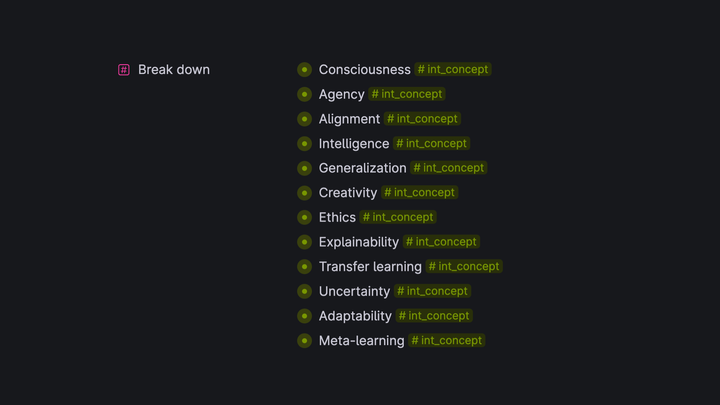Hey 👋 — Andrew is here.
Today’s issue of Tools For Thought is all about Tana.
Issue will take about 5 minutes to read. Hope you enjoy it!
Something major happened in TfT community.
A new system is out there. It's Tana.
I believe it is fair to say:
Tana is the next generation Tool For Thought.
It takes the best form Roam, Notion and Workflowy
And goes way beyond that.
I've been playing with it for a couple of days.
Here are three things why Tana might be the next big thing.

01. Structure
Tana is all about structure.
When my Roam graph became large enough, it became difficult to maintain. I began to spend time building structures using Smartblocks and templates.
It was fun at the beginning.
But after some time, it was not.
Maintenance became time-consuming and frustrating.
Tana allows you to create and maintain(!) structures by design.
You can implement your database schema, taxonomy, ontology right at the core of the the system.
Tana uses the principles of Object Oriented programming
Where TAG defines Class
And the NODES work as Instances.
Here is an example:
I have a class Book
Book has an author
Book connected to the workflow
Book connected to project

Now I want to update all the books in my database.
I want to add another field.
It might be the publishing date or any other useful information.
By updating the book supertag, I automatically update all the books. Magic!
This allows you to build your system following the principles of evolving complexity. Update your data structures as you move forward on your journey.
Classifications such as kinship categories aid in the organization, encoding, and communication of complex knowledge.
— Daniel Levitin
I see structure as a major component of Tools for Thought.
When you classify, create taxonomies and schemas, you learn and explore underlying principles.
When you organize your notes, you organize your mind.
Structures give us insights and clarity.
Tools for thought should help us structure the world around us and allow better sensemaking.
02. Advanced workflows
Tana was built with the power user in mind.
It addresses many of the issues that established systems like Roam and Obsidian have.
Tana has powerful workflow features built into the core. They don't require any additional plugins.
Tools like:
- fields
- supertags
- life queries
- views
They enable users to build very sophisticated workflows.
Here are a couple of examples:
You can use life queries to search your database and mine insights.
Tana took the best from Roam queries and Obsidian Dataview and moved it forward.
You can use views to play with visual data representation.
Tana has Notion-like UX to work with databases.
And all the elements integrated with core Tana concepts (nodes, supertags)

Modern UI/UX
Tana's interface was built with love. You can say it from the first interactions.
The more I use Tana; the more I think:
"Oh, that's clever!"
Tana experience includes:
- Nodes moving suggestions
- Automatic tagging
- Separate backlinks from different workspaces
- Bullet points give node information

Tana offers a modern approach to UI/UX, which is familiar to users of Superhuman and Cron. The Command line pattern works better than "/" menu in Roam or Notion.
So...
I've made a decision to go All In and move to Tana from Roam.
During this process, I redesign my structure sufficiently and eliminate some unnecessary notes and artifacts.
How to get Tana
Nowadays, Tana is invite-only.
So you need to register and wait for an early access.
Where to learn more about Tana?
Mini-course on Tana by Cortex Futura
Robert Haisfield + Maggie Appleton: Tana Tour
Ev Chapman's system demo


